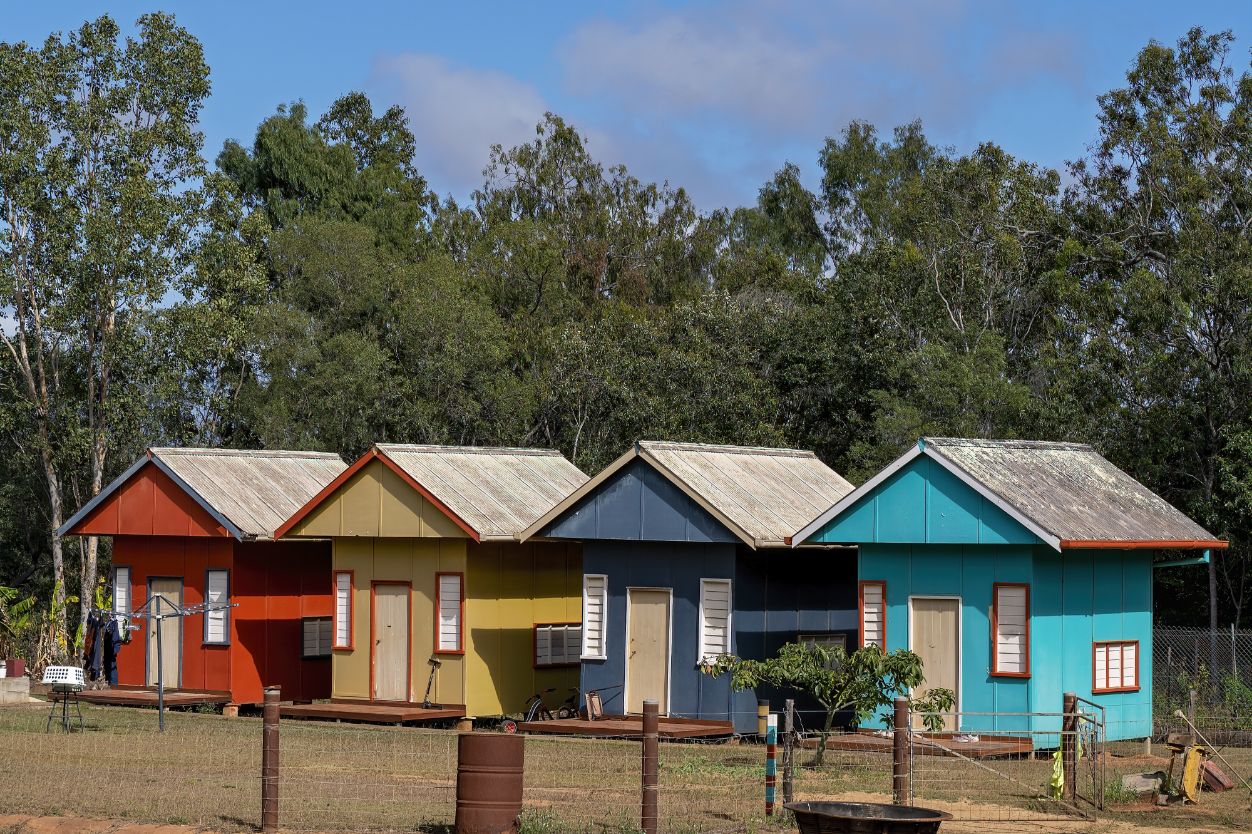Disclaimer: PropStream doesn’t offer advice on adding ADUs, tiny homes, or guest houses to your property or renting them out. We recommend researching local zoning laws and working with a legal professional before investing in them.
With home affordability the worst it’s been since 1984, alternative housing options like accessory dwelling units (ADUs) and tiny homes are becoming increasingly popular.
A recent Freddie Mac consumer survey found that after learning what an ADU is, 32% of respondents who don’t own one expressed interest in having one in the future.
Similarly, an IDX1031 survey found that 56% of Americans would consider living in a tiny home, and 86% of those who’ve never owned a home said they’d consider buying one as their first property.
As an investor or agent, you can capitalize on these trends. But first, you must understand the differences between ADUs, tiny homes, and guest houses. Though often used interchangeably, they mean different things.
Table of Contents |
Key Takeaways:
🔑 It's crucial for real estate professionals to distinguish between Accessory Dwelling Units (ADUs), tiny homes, and guest houses. While often used interchangeably, they serve different purposes and may have different regulations.
🔑 Before considering the addition of ADUs, tiny homes, or guest houses, it's essential to understand the regulatory landscape. Local zoning laws and permitting processes play a crucial role in determining the feasibility of these housing options.
🔑 Evaluating the cost and potential return on investment (ROI) is a critical factor in deciding whether to invest in ADUs, tiny homes, or guest houses.
🔑 The demand for ADUs, tiny homes, and guest houses is on the rise, fueled by factors such as a housing shortage, multi-generational living trends, and increased remote work.
What Is an ADU?
An accessory dwelling unit (ADU) is a secondary housing unit that shares a lot with another primary property. It’s a fixed structure with its own entrance, bathroom, and kitchen—everything a resident needs to live independently from the main home.
There are three main ADU types: attached, detached, and internal.
Attached
An attached ADU (AADU) is structurally connected to the main home. For example, it may be an apartment built onto the back or side of the house.
Detached
A detached ADU (DADU) is a separate structure from the main home, such as a backyard cottage or a detached garage.
Internal
An internal ADU (IADU) is an ADU that exists entirely within the primary structure. A section of the interior space is converted into its own living space with a separate entrance.
ADUs can serve as long- or short-term rentals, guest housing, home offices, housing for elderly parents or adult children, and more. They’re the most versatile alternative housing structure.
What Is a Tiny Home?

A tiny home is a residence that is significantly smaller than a traditional house—usually 100 to 400 square feet. Unlike ADUs, tiny homes don’t have to share a lot with another property and are generally portable, i.e., they lack a foundation and have wheels.
Though they can be used similarly to ADUs (depending on the state), tiny homes are best suited for housing one or two residents due to their small size.
What Is a Guest House?
A guest house is a small dwelling on a single-family property meant for short-term visitors. Unlike ADUs and tiny homes, guest houses can’t provide permanent housing. They’re just a private space for family and friends to spend the night comfortably.
Most guest houses have a bedroom with a half or three-quarters bathroom and no kitchen, relying on the primary home for cooking and other amenities.
How are ADUs, Tiny Homes, and Guest Houses Regulated?
Now that you know the main differences between ADUs, tiny homes, and guest houses, let’s review how they are regulated.
ADU Regulations
ADU regulations vary by state and city.
In California, for example, they’ve been legal since 1982. However, at the time, many local governments implemented barriers to building them. Since then, the state has passed laws preventing cities from hindering ADU construction, leading to a 1,421% increase in California ADU permits from 2016 to 2021. Other states don’t allow ADUs at all or have strict requirements regarding their size, occupancy limits, required parking space, and ability to be rented out.
Keep in mind that once built, an ADU cannot be sold separately from the main property since it sits on the same lot. They must be sold together.
Tiny Home Regulations
Because tiny homes lack a foundation, they are usually not considered real estate but recreational vehicles (RVs). As such, they must be registered with the Department of Motor Vehicles (DMV) and are subject to vehicle taxes instead of property taxes.
Tiny homes also don’t meet most building codes and typically can’t be connected to the city grid except in designated areas such as mobile home parks.
Some cities are more accepting of tiny homes than others. For example, Los Angeles has allowed them in backyards since 2019. Other cities don’t, or if they do, require them to be accessible via driveway. Sometimes, you can rent out a tiny home if you own the land it sits on and it has all the necessary living amenities.
Unlike ADUs, however, tiny homes can and must be sold separately from the main property since they are not physically attached.
Guest House Regulations
Guest houses are the most limited in their legal use. Unlike ADUs and tiny homes, they aren’t equipped with kitchens and consequently aren’t permitted for permanent residency or rental housing.
Again, zoning restrictions vary by city. However, you may find them more lenient than those for ADUs and tiny homes since guest houses are for private use only.
❗Before constructing any of these alternative housing structures, consult a local attorney who specializes in the one you’re interested in and knows the relevant regulations. Also, investigate the permits needed within the county.
Cost and Potential ROI of ADUs, Tiny Homes, and Guest Houses

The cost and potential return on investment (ROI) of ADUs, tiny homes, and guest houses is another major factor to consider before investing in one.
The average ADU costs between $150,000 and $400,000, depending on location, size, quality, and other factors. It’s generally the most expensive of the three housing types, but it also has the highest potential ROI. According to a Porch study, ADUs in big cities can increase your property’s value by up to 35%!
In contrast, tiny homes typically only cost $30,000 to $60,000 because they are smaller and don’t require a foundation. Keep in mind, however, that since they are not attached to land (which tends to appreciate in value over time), tiny homes tend to depreciate the way vehicles do.
Guest houses cost an average of $55,000. Because they are fixed to the primary property, they tend to appreciate over time, potentially providing a positive ROI. However, you won’t benefit from steady rental income since guest houses can’t be rented out.
| ⚡ Pro Tip: All three housing types require regular maintenance, without which their value could sink and potentially hurt your primary home’s value. If adding one of these structures to your property, plan this into your budget. |
The Growing Demand for ADUs, Tiny Homes, and Guest Houses
Demand for ADUs, tiny homes, and guest houses is rising, not least because the U.S. is experiencing a record housing shortage. These smaller residential units can help fill the gap of 6.5 million missing homes.
Additionally, multi-generational living is becoming more common. According to the Pew Research Center, the number of U.S. young adults who live with their parents is at an all-time high for the first time since the Great Depression. Similarly, many Americans without retirement savings choose to move in with their adult children.
Furthermore, increased remote work has boosted demand for office ADUs. According to the U.S. Census Bureau, the number of people primarily working from home tripled between 2019 and 2021.
Loosening regulations are also contributing to a growing demand for smaller residential units. In October, the U.S. The Department of Housing and Urban Development (HUD) announced new policies that let lenders count ADU rental income when underwriting mortgages. Similarly, California has set aside a budget of $50 million to pay some homeowners to build ADUs.
Now may be as good a time as any to invest in an ADU, tiny home, or guest house. Just be sure to check local regulations, get the proper permits, and work with a professional.
|
Interested in adding an ADU to a property for additional rental income but unsure if it's worth the investment? Use PropStream's ADU Calculator for a build estimate based on your zip code, ADU size, and more. Activate your 7-day free trial today to see it in action! |
